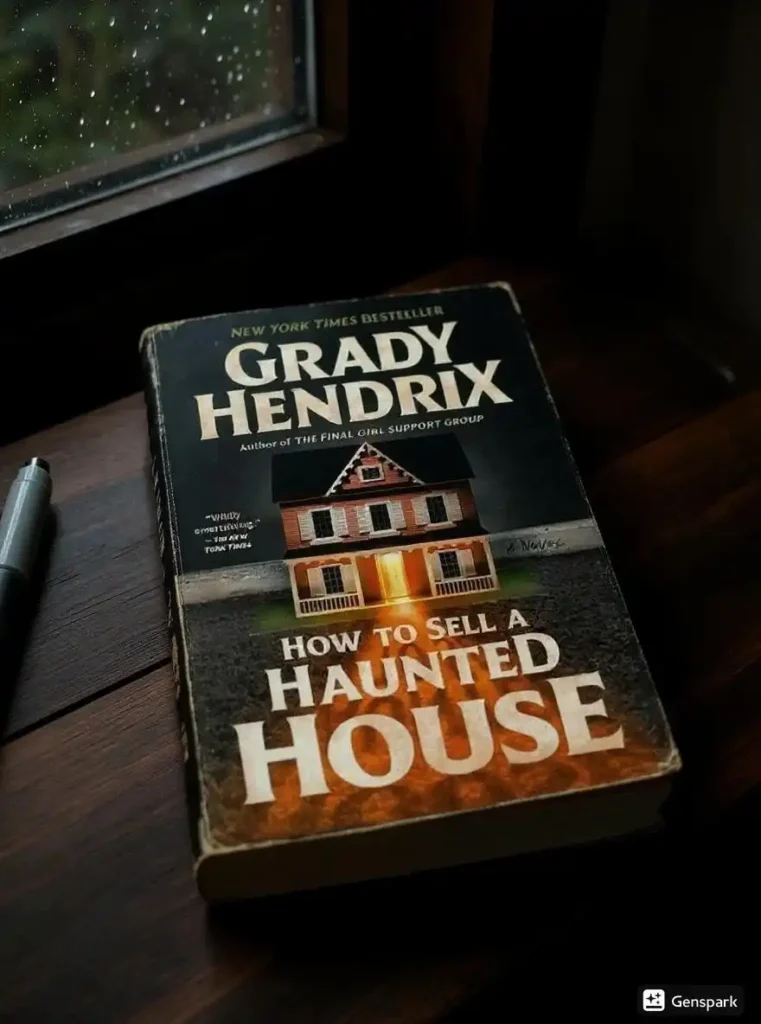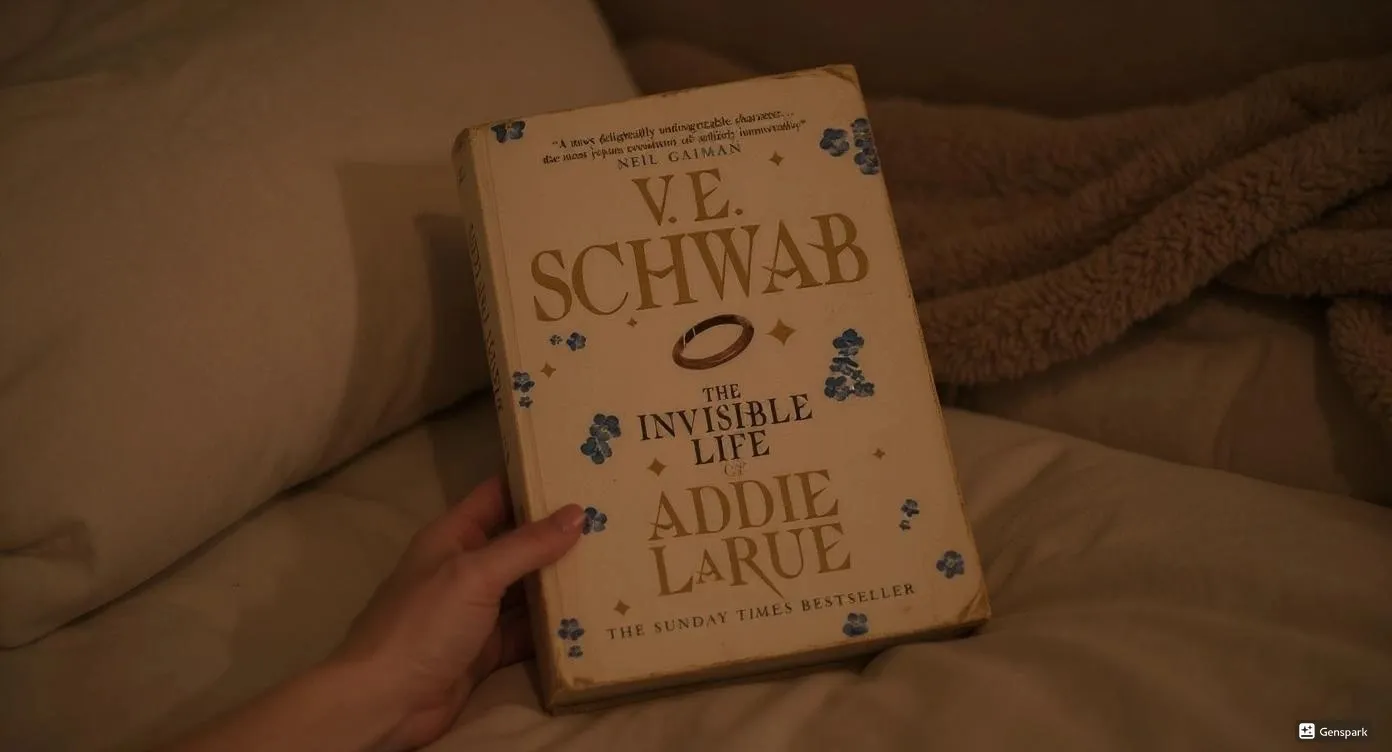I picked up How To Sell A Haunted House at 2 AM during one of those restless nights when sleep refused to come. Charleston native Grady Hendrix, the Porter-Gaud graduate, had already mentally scarred me with his previous works, so I knew I was in for something jaw-dropping. What I didn’t expect was to find myself completely absorbed until dawn, frantically turning pages while questioning my life choices.
As someone who’s reviewed over fifty horror novels this year for Dionysus Reviews, I can confidently say Hendrix continues to prove why he’s become a master of contemporary horror-comedy. The book became an instant New York Times bestseller, and after reading it myself, I understand the hype. The story follows Louise Joyner, who returns to her childhood home in Charleston after her parents’ death, only to discover that selling the family estate comes with supernatural complications that make real estate agents run screaming.
The New York Times noted that “by weaving violence, family trauma and humor, Hendrix creates a texture that engages the reader emotionally and viscerally”, which perfectly captures what makes this book both terrifying and deeply moving. The puppet-centric horror here goes beyond typical haunted doll tropes, diving into generational trauma and sibling dysfunction with surgical precision.
Hendrix masterfully balances laugh-out-loud moments with genuine terror, creating a reading experience that left me questioning everything I thought I knew about family dynamics and childhood memories. The book tackles grief, inheritance battles, and the weight of family secrets while delivering scares that had me checking my closets for possessed puppets.
Key Takeaways
The book’s exploration of grief follows the five stages of mourning, but Hendrix twists each phase into supernatural horror that feels both cathartic and terrifying.
Sibling relationships under stress reveal hidden traumas that can manifest in the most unexpected and frightening ways when family secrets finally surface.
Puppet horror serves as a metaphor for childhood powerlessness and the ways our past continues to control us long into adulthood.
Charleston’s Southern Gothic atmosphere becomes a character itself, with the family home representing both sanctuary and prison for the Joyner siblings.
The book demonstrates how unresolved family trauma can literally haunt future generations, making the supernatural elements feel psychologically authentic rather than purely fantastical.
Basic Book Details
Publishing Information: January 17, 2023 by Berkley
Genre: Horror, Comedy, Southern Gothic
Plot: Siblings Louise and Mark must clean out their childhood home after their parents’ death, but the house’s collection of puppets has other plans
Series Information: Standalone novel
Page Count: 352 pages
Main Characters:
- Louise Joyner: Single mother struggling with grief and family obligations
- Mark Joyner: Louise’s brother hiding addiction and childhood trauma
- Pupkin: The primary puppet antagonist representing unresolved family dysfunction
Personal Reading Experience
I’ve gotta be honest – I approached this book with some skepticism. After reading thousands of horror novels, puppet-based scares often feel derivative or cheap. But Hendrix completely subverted my expectations within the first fifty pages. I found myself reading during my lunch breaks at work, completely absorbed in Louise’s mounting horror as she discovers her childhood home has become something unrecognizable.
The way Hendrix builds tension through mundane activities like sorting through belongings is absolutely masterful. I remember putting the book down multiple times during the middle chapters, not from boredom, but because the psychological horror became so intense I needed breathing room. There’s something deeply unsettling about watching characters sort through deceased parents’ possessions while supernatural forces manipulate their emotions and memories.
What struck me most was how the horror felt earned rather than gratuitous. Every supernatural event connects directly to the characters’ psychological states and unresolved trauma. When I reached the climactic puppet sequences, I wasn’t just scared – I was emotionally invested in Louise and Mark’s journey toward healing their fractured relationship.
Literary Analysis
Craft and Structure
Hendrix employs a dual perspective narrative that alternates between Louise and Mark’s viewpoints, creating a complete picture of family dysfunction. His chapter organization follows the five stages of grief, with each section building supernatural tension while processing emotional trauma. The author’s background as both a horror novelist and film festival founder shows in his cinematic approach to scene construction.
Writing Style Assessment
The prose strikes a perfect balance between accessible humor and genuine terror. Hendrix avoids purple prose, instead using sharp, conversational dialogue that feels authentically Southern. His character development through action rather than exposition keeps readers engaged while building psychological depth. The author’s journalist background shows in his precise, economical language choices that pack maximum emotional impact.
Technical Quality
The novel’s pacing is relentless without feeling rushed. Hendrix masterfully builds tension through seemingly innocent domestic scenes – sorting through closets becomes genuinely terrifying when puppet eyes seem to follow characters around rooms. His ability to make readers care about estate sale logistics while maintaining supernatural dread demonstrates serious technical skill.
Character Development and Psychological Depth
Louise Joyner’s Emotional Journey
Louise represents the responsible sibling who sacrificed personal dreams for family stability. Her character arc from bitter resentment to acceptance drives the novel’s emotional core. Hendrix doesn’t make her likable immediately – she’s judgmental, controlling, and often cruel to her brother. But as supernatural events force her to confront childhood trauma, her protective instincts and genuine love for family emerge. Her relationship with her teenage daughter Poppy adds another layer of generational complexity.
Mark’s Hidden Trauma and Transformation
Mark’s addiction issues and childlike regression initially seem like typical “failure to launch” stereotypes. But Hendrix gradually reveals deeper psychological wounds that make his vulnerability to puppet possession feel tragically logical. His artistic background and sensitivity to supernatural forces create a compelling contrast to Louise’s practical skepticism. The revelation of his childhood experiences with Pupkin recontextualizes his entire adult dysfunction.
Plot Summary and Setting Analysis
Charleston Southern Gothic Atmosphere
The Joyner family home becomes a character itself, filled with decades of accumulated possessions that hide supernatural threats. Hendrix uses Charleston’s historic architecture and cultural traditions to ground the horror in recognizable Southern Gothic elements. The house’s layout – with its multiple levels, hidden storage areas, and puppet-filled rooms – creates a maze-like environment where characters can’t escape their past.
Supernatural House Manifestations
The puppet activity begins subtly – dolls appearing in different positions, sounds from empty rooms, temperature fluctuations around certain objects. Hendrix escalates supernatural events logically, with each manifestation tied to the siblings’ emotional states and childhood memories. The house doesn’t just contain haunted objects; it actively responds to the family’s unresolved trauma.
Puppet Horror Symbolism and Genre Analysis
Pupkin as Childhood Trauma Manifestation
The primary antagonist puppet represents everything the siblings couldn’t control as children – parental neglect, sibling rivalry, and powerlessness against adult decisions. Pupkin’s ability to manipulate other dolls mirrors how childhood trauma can affect all aspects of adult life. The puppet’s folksy appearance contrasts sharply with its malevolent actions, reflecting how family dysfunction often hides behind pleasant facades.
Folk Art Tradition vs Supernatural Possession
Hendrix explores the tension between craft traditions and occult practices through the family’s puppet collection. The novel suggests that artistic creation can become a conduit for supernatural forces when combined with intense emotional investment. This theme resonates with broader questions about how we inherit not just material possessions but also psychological and spiritual baggage from previous generations.
Comparison and Context
Unlike typical haunted house stories that focus on external threats, How To Sell A Haunted House makes the supernatural inseparable from family psychology. Where Stephen King’s “The Shining” explores how isolation drives people insane, Hendrix examines how family obligations can trap us in cycles of dysfunction. The book shares DNA with Shirley Jackson’s “We Have Always Lived in the Castle” in its exploration of family secrets and isolation.
Compared to Hendrix’s previous works like The Southern Book Club’s Guide to Slaying Vampires, this novel feels more emotionally grounded and less reliant on genre parody. The humor emerges naturally from character interactions rather than satirical genre commentary. This represents a maturation in Hendrix’s writing that longtime fans will appreciate.

Genre Convention Assessment
Horror Elements
The puppet-based scares work because they’re rooted in genuine psychological terror rather than cheap jump scares. Hendrix understands that the most effective horror comes from emotional vulnerability, not gore or shock value. The supernatural elements serve the story’s themes rather than existing purely for entertainment value.
Comedy Integration
The humor never undermines the horror; instead, it provides necessary relief while highlighting character relationships. Louise and Mark’s sibling banter feels authentic even during supernatural crises. This balance prevents the novel from becoming either too grim or too silly, maintaining reader investment throughout.
Strengths and Weaknesses Analysis
| Strengths | Weaknesses |
|---|---|
| Masterful character development through supernatural pressure | Some secondary characters lack depth |
| Perfect balance of horror and humor | Puppet horror may not appeal to all readers |
| Authentic family dynamics and dialogue | Pacing occasionally slows during emotional scenes |
| Charleston setting adds atmospheric depth | Resolution feels slightly rushed |
| Innovative use of grief stages as story structure | Some supernatural rules remain unclear |
What Works Exceptionally Well
The book succeeds because it treats supernatural elements as extensions of psychological reality rather than separate phenomena. Hendrix’s ability to make readers care about estate sale logistics while maintaining supernatural tension demonstrates masterful storytelling. The sibling relationship feels authentic in its messiness and complexity.
Areas for Improvement
Some readers might find the puppet-based horror too specific or childish for their tastes. The novel’s focus on family trauma might feel heavy for readers seeking pure entertainment. Certain plot threads resolve too quickly after extended buildup, particularly regarding Mark’s addiction recovery.
Reader Recommendations
Perfect For:
- Fans of psychological horror over gore-based scares
- Readers who enjoyed Mexican Gothic or The Haunting of Hill House
- Anyone dealing with family inheritance issues or sibling dysfunction
- Horror readers who appreciate humor mixed with genuine scares
- Fans of Southern Gothic literature and Charleston settings
Avoid If:
- You’re looking for traditional monster horror or slasher elements
- Puppet-based horror triggers specific phobias
- You prefer action-heavy plots over character-driven stories
- Family trauma themes feel too emotionally heavy
- You dislike first-person narrative perspectives
Content Warnings:
The book contains discussions of addiction, childhood neglect, and family dysfunction. Puppet-related horror sequences may disturb readers with specific phobias. Some violent scenes occur during supernatural encounters, though nothing gratuitously graphic.
Technical Quality Review
Prose Assessment
Hendrix’s writing has matured significantly since his earlier works. The dialogue feels natural and regionally authentic without becoming caricature. His descriptive passages create atmosphere without slowing narrative momentum. The author’s journalist background shows in his economical word choices and clear sentence construction.
Structure and Pacing
The five-stage grief framework provides excellent story architecture without feeling forced or obvious. Chapter breaks occur at natural dramatic peaks, maintaining reader engagement throughout. The dual perspective approach gives complete character development without repetitive information.
Cultural Context Integration
The Charleston setting isn’t just decorative – it informs character behavior, family history, and supernatural elements. Hendrix demonstrates genuine understanding of Southern culture without relying on stereotypes or exploitation. The puppet-making tradition feels authentically researched and respectfully portrayed.
Emotional Impact Description
Reading this book left me emotionally drained but satisfied, like completing a difficult therapy session. The supernatural elements scared me, but the family dynamics hit closer to home. I found myself thinking about my own sibling relationships and how unresolved conflicts can haunt us long after childhood ends.
The puppet sequences genuinely disturbed me – not because they’re particularly graphic, but because they represent such primal fears of powerlessness and loss of control. Hendrix taps into something deeper than surface-level scares, creating horror that lingers long after closing the book.
At Dionysus Reviews, we’ve seen countless horror novels that mistake shock value for genuine terror, but this book understands that the most effective scares come from emotional truth. The supernatural elements work because they reflect real psychological experiences of grief, guilt, and family obligation.
Common Misconceptions
Many readers expect this to be pure comedy horror like Hendrix’s earlier works, but the emotional depth here runs much deeper. The humor serves character development rather than genre parody. This isn’t a light, fun horror romp – it’s a serious exploration of family trauma with comedic relief.
Some reviewers dismiss puppet horror as inherently silly, missing how Hendrix uses these elements to explore themes of control, childhood powerlessness, and inherited trauma. The supernatural aspects aren’t meant to be realistic; they represent psychological realities that feel familiar to anyone who’s dealt with difficult family dynamics.
Final Verdict
How To Sell A Haunted House represents Hendrix at his most emotionally mature and technically accomplished. The novel succeeds as both effective horror and moving family drama, proving that genre fiction can tackle serious themes without sacrificing entertainment value. Louise and Mark’s journey toward reconciliation feels earned rather than forced, with supernatural elements serving story needs rather than existing purely for shock value.
The book’s exploration of how family trauma perpetuates across generations resonates beyond genre boundaries. Hendrix demonstrates that the most effective horror comes from recognizing uncomfortable truths about ourselves and our relationships. The puppet-based scares work because they represent genuine fears about powerlessness and loss of control that most readers will recognize.
While the novel won’t convert readers who dislike horror entirely, it offers something for fans of psychological thrillers, family sagas, and Southern Gothic literature. The humor prevents the heavy themes from becoming overwhelming, while the genuine scares keep readers emotionally invested throughout.
Dionysus Reviews Rating: 7/10
This is horror fiction at its finest – scary, funny, emotionally honest, and technically accomplished. Hendrix has created something genuinely special that should appeal to both genre fans and literary fiction readers seeking something outside their comfort zone.
Sip The Unknown—Discover Stories You Never Knew You’d Love!
Dionysus Reviews Has A Book For Every Mood
Biography & Memoir
Fiction
Mystery & Detective
Nonfiction
Philosophy
Psychology
Romance
Science Fiction & Fantasy
Teens & Young Adult
Thriller & Suspense
Frequently Asked Questions
What emotions did this story evoke?
The novel evoked a complex mix of anxiety and catharsis that kept me emotionally off-balance throughout. Watching Louise and Mark navigate their grief while dealing with supernatural threats created genuine tension between wanting them to reconcile and fearing for their safety.
How does the author’s Charleston background influence the story?
Being a Charleston native, Hendrix brings authentic regional details that ground the supernatural elements in recognizable cultural traditions. The puppet-making heritage and Southern Gothic atmosphere feel lived-in rather than researched, adding credibility to the family’s generational secrets.
Does this book work for readers who typically avoid horror?
The strong family drama elements and character development make this accessible to readers who usually avoid pure horror. The supernatural aspects serve the emotional story rather than existing purely for scares, though puppet-phobic readers should definitely proceed with caution.
How does this compare to Hendrix’s other novels?
This represents a maturation in Hendrix’s writing style, with less genre parody and more emotional depth than his earlier works. The humor feels more natural and character-driven compared to the more satirical approach in books like Horrorstör. Long-time fans will appreciate this evolution.
Are the puppet scenes too intense for sensitive readers?
The puppet sequences are psychologically disturbing rather than graphically violent, but they may trigger specific phobias. Readers uncomfortable with themes of childhood trauma or loss of control should approach carefully. The horror comes from emotional manipulation rather than gore or shocking imagery.









